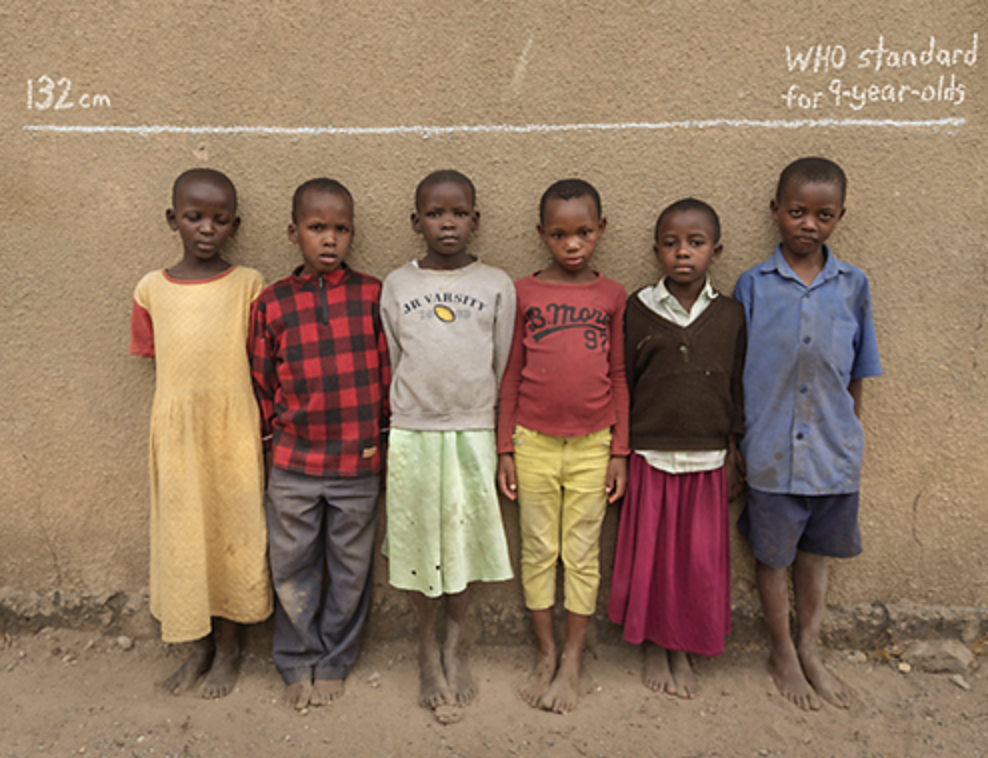The visualization above shows that the prevalence of stunting varies by world region, with the highest prevalence in Africa, South-Central Asia and Arab countries.
Yemen has the highest prevalence of moderate to severe stunting (51.9%). Djibouti has the highest prevalence of wasting (30.8%), Overweight ranged from 2.9% in Sudan to 17.83% in the Syrian Arab Republic.
According to the graph, the Arab LDCs (Least developed countries) have a “high prevalence” rate of underweight with more than 37% in Yemen, and 29.93% in Sudan.
More prevalence rates can be explored using the visual above, by searching for the related indicator name and simply selecting it in the “Indicator Name” Filter on the left.
Undernutrition makes children more vulnerable to many diseases like underweight and deficiencies in vitamins and minerals. Stunting prevents children from reaching their physical and cognitive potential. The above two visualizations are showing that the number of undernourished people in Arabic countries and the prevalence of stunting are positively correlated which indicates that chronic and recurrent undernutrition is definitely one of the causes of stunting.
According to UNICEF, Child mortality or the under-five mortality rate refers to the probability of a child dying between birth and exactly 5 years of age, expressed per 1,000 live births [1].
The under age 5 mortality rate is an indicator of child health as well as the overall development and well-being of a population. As part of their Sustainable Development Goals, the United Nations has set a target of reducing under age 5 mortality to at least as low as 25 per 1 000 live births by 2030 (United Nations, 2015).[2]
In 2019, the average of children that died before reaching the age of 5 was 37 per 1000. Although most of the world had made significant progress in child survival, several Arabic countries recorded a high average in under-five mortality rate in the last 10 years.
Compared to the 2019 average, we notice that six Arab countries recorded high average rates. Somalia recorded the highest average of 135.6 deaths per 1000 for under 5-children among all other Arab countries. South Sudan and Comoros were amongst the top countries in the Arab world with respective averages of 98.1 and 73.3 per 1000. It is to be noted that the Somalia recorded the highest average worldwide whereas South Sudan and Comoros were among the top 25 countries worldwide.
WHO identifies the average health expenditure as an indicator that is used to calculate the average expenditure on health per individual in relation to the population size, expressed in U.S. dollars. This indicator represents expenditures spent by citizens in respect of health services, family planning activities, nutrition, and emergency aid. However, drinking water and sanitation expenditures don’t fall under this category.
There is a direct association between a country’s expenditure on health and health outcomes: the largest the expenditures are, the better health outcomes will be. An indicator of a good health system is identified when a government attributes high expenditure budget toward health and nutrition compared to its income per capita [3].
Qatar had the highest health expenditure per capita among Arab nations. From 2010 till 2018, average health expenditure per capita amounted to U.S. dollars 1,669, which is higher than United Arab Emirates, the country with the second highest average health expenditure per capita by 12%. This visualization also shows that Kuwait, Saudi Arabia, and Bahrain are also within the top six countries following United Arab Emirates with an average health expenditure per capita of U.S. dollars 1,327, 1,147 and 1,010 respectively.
Remarkably, despite its small population size compared to the other Arab countries, Lebanon ranked sixth among the top countries with an average health expenditure per capita of U.S. dollars 621 representing 63% decrease in average expenditure compared to Bahrain and a 169% decrease in average health expenditure compared to Qatar.
In 2018, Lebanon ranked 33rd among 195 countries in the Healthcare Access and Quality (HAQ) index and it ranked number one among Middle East countries as providing the best performance [4].
South Sudan has the lowest healthcare expenditures in the Arab countries of U.S. dollars 27 due:
1- To lack of support of the government; and
2- As reported by UNICEF, South Sudan has experienced poor road infrastructure making the transportation of medical supplies difficult [5].
The countries that follow South Sudan are Comoros, Djibouti, Yemen, Syria, and Sudan which are considered as low-income and conflict-affected and fragile states have better average health expenditures. In general, the wealthier a country is, the greater they will contribute into health care, in order to improve life expectancy and decrease mortality rates.
References:
[1] https://data.unicef.org/topic/child-survival/under-five-mortality/#:~:text=There%20are%20different%20ways%20to,dying%20every%20day%20in%202019.
[2] Health at a Glance: Asia/Pacific 2018
[3] https://www.who.int/data/nutrition/nlis/info/health-expenditure
[4] https://www.arab-reform.net/publication/saving-the-suffering-lebanese-healthcare-sector-immediate-relief-while-planning-reforms/
[5] https://www.borgenmagazine.com/healthcare-in-south-sudan/

0 Comments